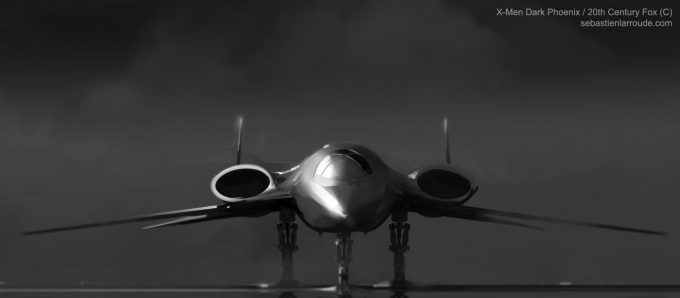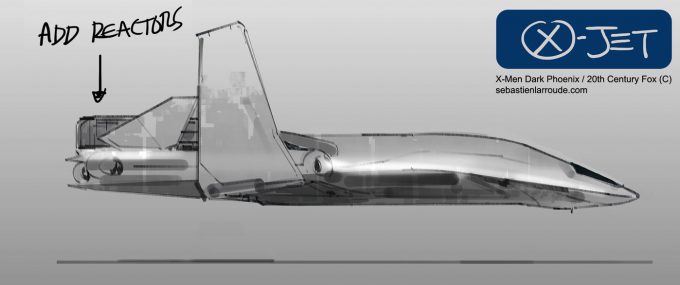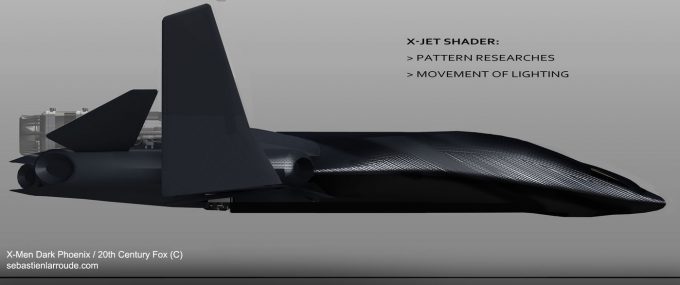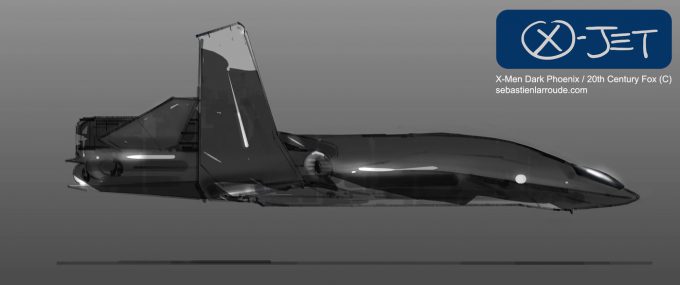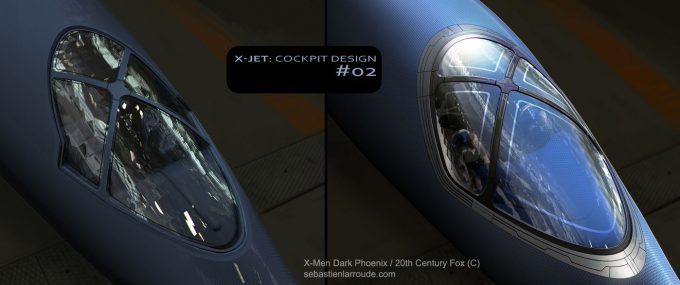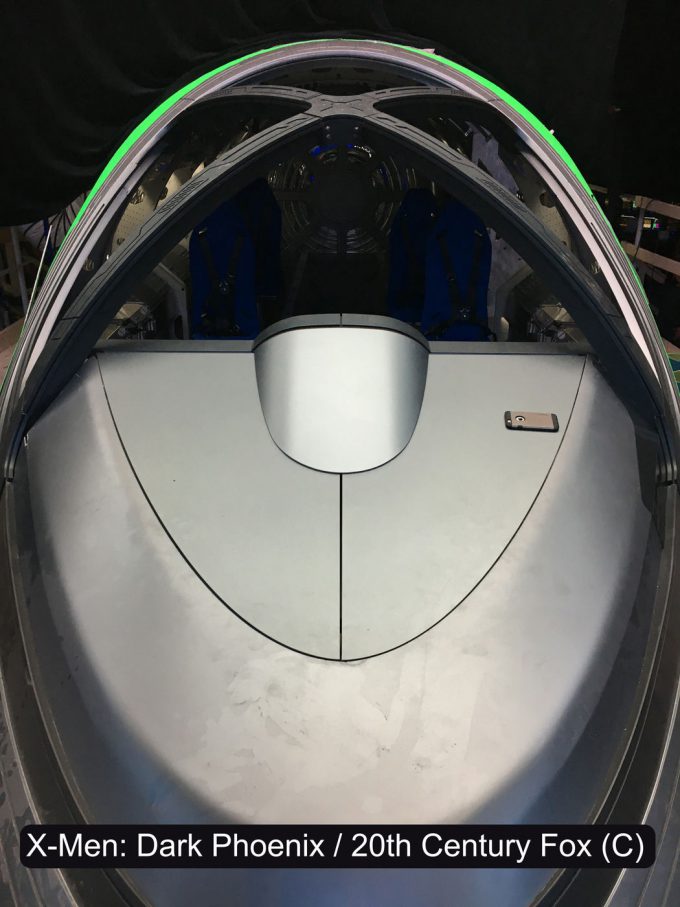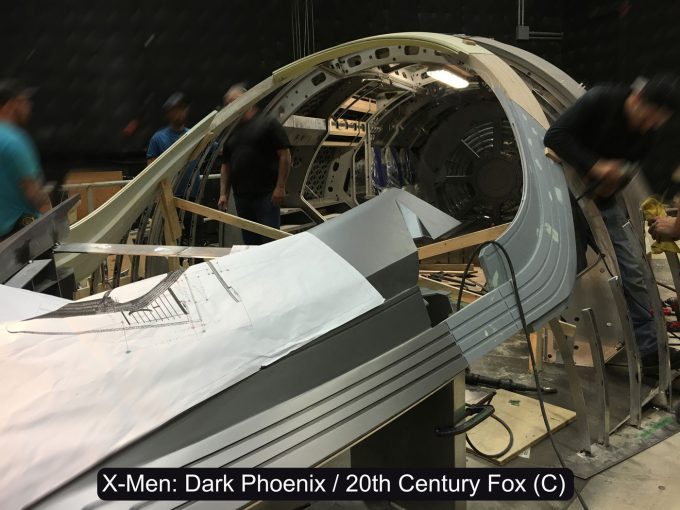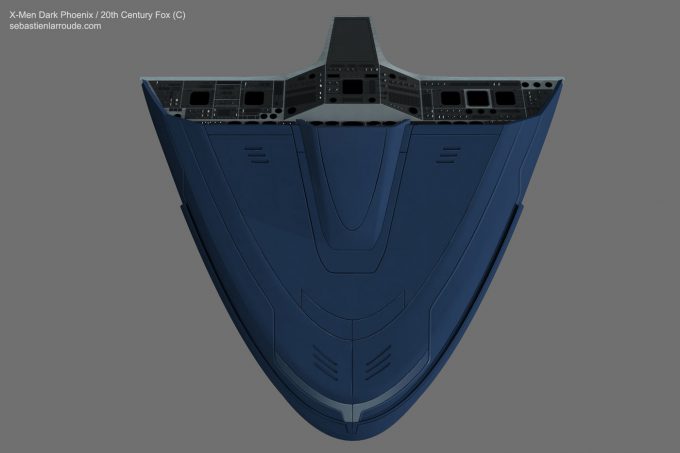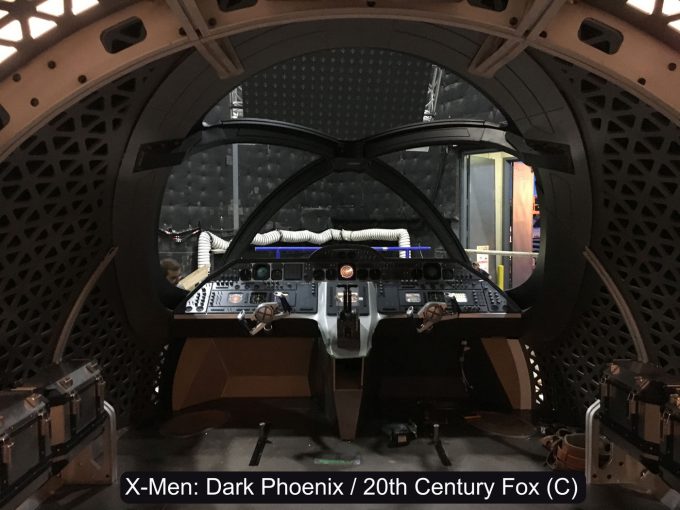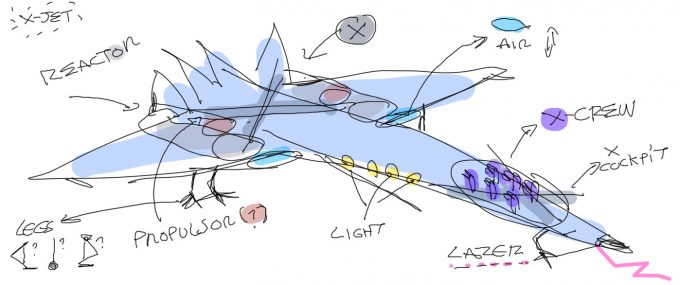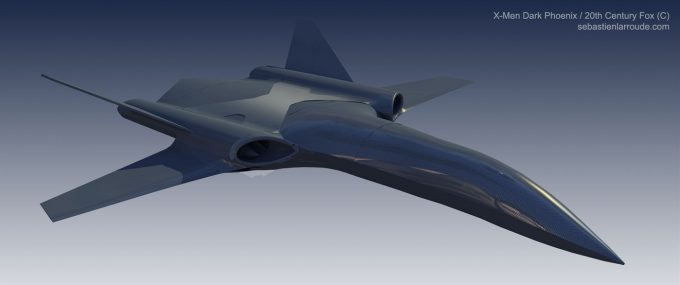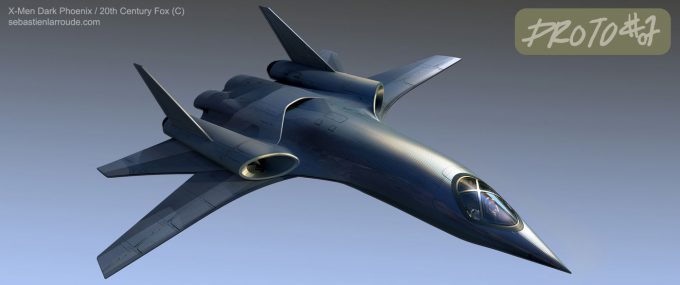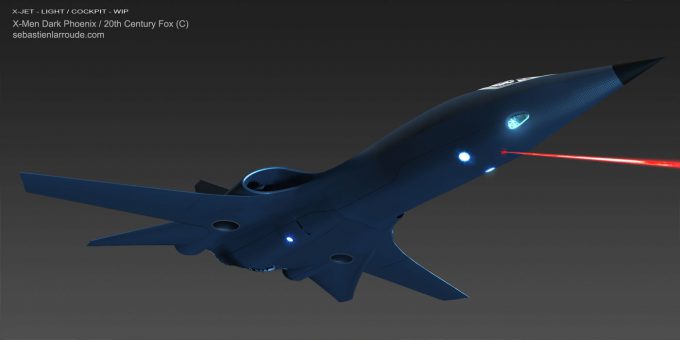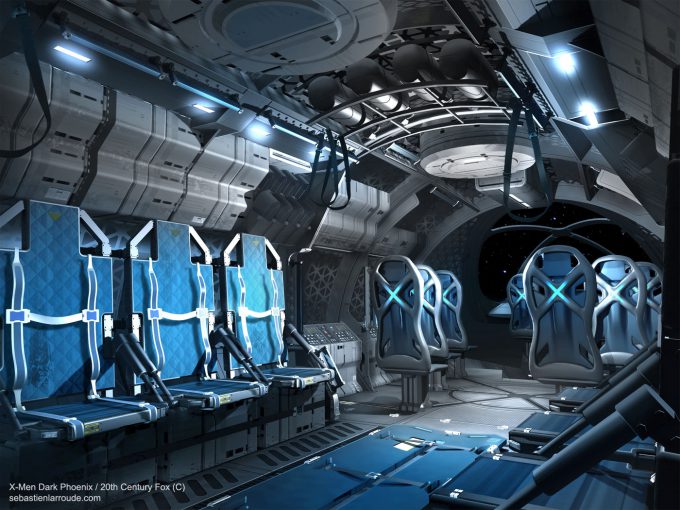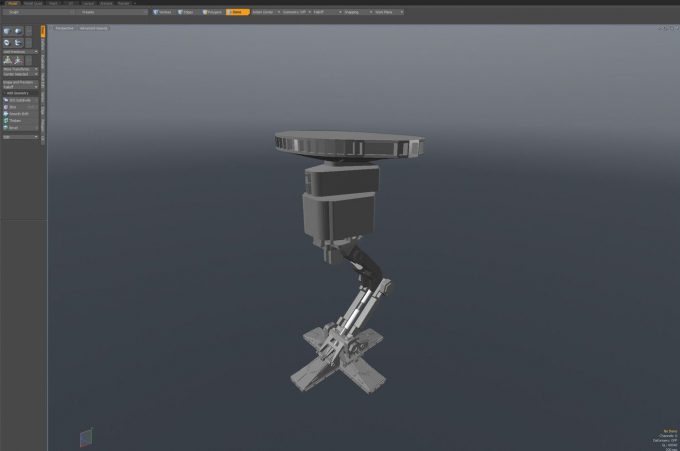Thank you again to CW to give me the opportunity to talk about my contribution and share my experience on the movie X-men: Dark phoenix. I made some moods, props, and environments but I was mainly hired on the project as a concept designer to work with a team on the new X-men plane called the ”X-jet” which took us several months of development.
First of all, It’s an amazing chance to have the opportunity to draw and imagine a plane or a spaceship. What child didn’t dream one day to build something like this, right ? (I remember my first one was for the MadMovies mag challenge in the 90’s, all made with forks, plastic capsules and junk…)
What I can share today is my experience on this project and my working process instead of appealing images. One of the biggest constraints of this X-jet was its capacity to evolve in space and stay credible in terms of functionality. Therefore I quickly focused to develop a very grounded design, from the beginning to the final version. The X-jet has to be stealthy and elegant from the exterior, as if sculpted by the wind to be aerodynamic. It needed to be very functional inside, a bit military like a submarine with a flavor of do-it-yourself. So three words to start, three pillars you have to merge into one direction: elegant + military + do it yourself. Sounds challenging at first but oppositions create interesting dynamics. Also, the plane has to be iconic but respect also the older versions of the ”X-men jets. But it still challenging to find the good balance and what is acceptable for us and fans. For example, we have the ‘’X’’ pattern of the wings visible in a top view camera, the seats which recalls of bucket seat to reduce weight and aid the performance of the Jet (and these seats were not really confortables for the actors), including the cockpit and all others details which help this aspect of the design.
My first step is always to start to understand the different constraints of work which are connected directly or indirectly to the design (like the specific fantasy of the project, the history of the plane, etc.). I also need to understand what are the common notions between all of these elements. Actually, what is the essence of the plane ? From this, I get a first image in my mind. We have to start somewhere. and ”somewhere” is the best place to go ahead with a first sketch. Usually I draw something very naive, simple, intuitive and a bit humorous sometimes. It’s the best way I find to communicate to the rest of the team what I have in mind to begin discussions and avoid over communication. It’s a bit like the drawing of a kid, because they draw only what is essential to them. And also ”funny” because it helps to keep people happy and open minded for your suggestions.
The rest is more relative to what the story or fantasy imposes. The fact that X-men have to customize their aircraft to evolve in space, inevitably impacts the shape of the design. And at first sight, the big reactors above the structure and the articulated legs don’t necessarily fit with the promise of a pure stealthy aspect of the design. The scenario can seriously impact the design and remind us how the design is a part of the story. I mean, I treated the X-jet like a character design, with his own personality. It is an integral part of the story. The attributes of its personality are: ”the esthetic”, ”the do it yourself”, ”the military side”, ”the furtive aspect” etc. like character traits. All can give a complex and interesting vibe to stimulate creativity, but without forgetting the constant input of the team to enrich the design. It’s both a top down and a bottom up process. Some people prefer the top-down or bottom-up process, but actually both are a very transcendental approaches because of the verticality. But both at the same time, are systemic and create interesting dynamics and happy accidents. The most important thing to me is to follow the vision and strong design pillars.
Some very practical examples: We’ve enlarged the size of the fuselage in order to be able to fit the appropriate equipment (camera, lighting, cables etc.) or the people, like the technicians, the actors etc. It was also necessary to take in consideration the X-men are wider than normal humans because of their costumes. Obviously all these adjustments must look natural on screen. Same for the integration of the Wheelchair in the cockpit, and these kinds of things. It’s almost impossible to list everything, I mean all the constraints before starting. From there, the team built in wood and cardboard, the prototype of the X-Jet then we revised the design several times. For example, the place of the seats to give room for the camera, to shoot actors etc. It’s a challenge for concept artists and Set Designers to think about a lot of details like that. I think a concept designer should be a ”problem-solver”. A personal anecdote, long time ago, someone asked me if it was better to design with or without constraints ? I don’t remember what was my answer, but today I would say the absence of constraint is a serious constraint, sometimes for the worst. I consider the constraints as basic realities we have to embrace. And if you understand constraints (extract knowledge), you can digest and integrate them into your process to move toward more freedom and creativity. If you don’t, constraints will be painful.
For the software aspect, I use any tool available to help me to create what I have in mind, depending on the deadline. But for this one, we used Modo, Rhino, Maya and SketchUp. 3D and simple sketches really help to rationalize and transmit a clear vision to the other collaborators. All especially when a team has to build practical props, and not only in CG. It’s a complex job. But nothing is more efficient than a simple drawing with a pen and a piece of paper. Simple and direct. You don’t have to resolve any technical issues beforehand.
Another example is how the set designers use a CNC process / 5 axes etc. In addition, to secure the design, avoid misunderstanding or limit mistakes I always do my own 3D model, then I export to the team. This way, the set-designers have a good base to start, rebuild properly, improve, create or fix with their own constraints. They have a different expertises. Concept design and Set Design are two very different jobs with a lot of similarities. They are complementary, they have to be. And the relationship between the concept designers and set designers is important, because the translation of the quality of the design depends on this cooperation. Obviously, the 3D help this communication. That’s why it’s important to have a clear pipeline. In addition, the interior of the fuselage was rebuilt over my 3D and calculated with a mathematical process within a Rhino plugin (the Grasshopper). The dashboard was entirely rebuilt with Rhino, the bridge of the jet and different modules with Sketch-up, etc.
In conclusion, I was lucky and honored to work with this team. They did an impressive job and helped me to do my job better. A special thanks to Radia Slaimi, Etienne Gravrand (Set Designers), David Gaucher, (Art Director), Michelle Laliberté (Art Director Supervisor), Claude Paré (Producer Designer, (Spider-Man: Far from home, IT etc.) ) and all the production for their trust. I hope people will appreciate all the work we put into the film. Thank you!
More images on my website: www.sebastienlarroude.com



